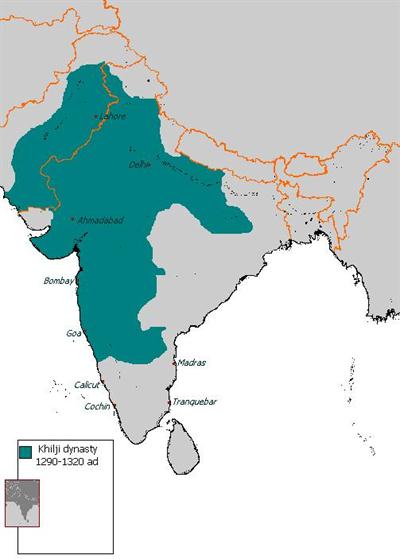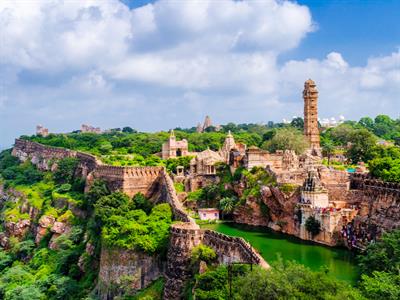PDF chapter test TRY NOW
Reign of Jalal-ud-din Khalji : (1290 - 1296 )
- Jalal-ud-din's period witnessed many military invasions and campaigns which expanded his empire. Still, most of these campaigns were undertaken by Jalal's nephew "Alauddin khalji" who was then the governor of Kara.
- Jalal had a benevolent attitude towards Hindus, which led him to adopt the “Policy of Tolerance”. He truly believed that an empire cannot survive without the goodwill of the governed and thus earned the support of the noble class.
Dynastic revolution of 1290: Jalaluddin headed the Khalji nobility, which subverted the inept successors of Balban to establish the Khalji dynasty. This incident came to be known as the Dynastic revolution of 1290.
Short Story: Alauddin khalji - The Shadow of Treachery.
Most of the military expeditions were under the captainship of Alauddin. One such expedition was undertaken by him in the Deccan region - Devagiri, where he defeated Yadava king Ramachandra and plundered his entire wealth. He used this wealth to buy some trusted confidants of Jalal-ud-din, whom he later used to kill Jalal-ud-din and capture the throne and proclaimed himself the ruler in \(1296\).“Kingship knows no Kinship”: Alauddin was the first among Sultans who separated politics from religion and proclaimed the theory “Kingship knows no Kinship”.

The Khalji Empire
Alauddin Khalji: The Real Architect of Khalji empire ( 1296 - 1316)
- The Delhi Sultanate was consolidated under the rule of Alauddin, who expanded his territories from Punjab ( against Mongols), Rajasthan and Gujarat.
- He prohibited festivals and banned Intoxicants and Liquor, and also reorganised “Barids – spy services”. He also reversed the Policy of Tolerance, followed by Jalaluddin.
- After sealing the northern frontiers, he sent his deputy Malik kafur to invade the south even up to Madurai in \(1310\).
Many kingdoms in India accepted the supremacy of Alauddin, which include :
- Yadavs of Devagiri
- Kakatiyas of Warangal
- Pandyas of Madurai
- Hoysalas of Dwarasamudra
Amir Khusrau: Alauddin embraced many poets, and notable among them was Amir Khusrau, whom he awarded the title “Tuti-i-Hind – Parrot of India”.
The Chittoor Tragedy: 1303
In the wake of Alauddin's wrath, which decimated the Rajput army in Chittoor, which pushed them to the brink of fall, sensing defeat, they decided to perform their old custom of "Jauhar". This practice means the sacrifice of their own lives by men fighting till death on the battlefield and women taking themselves into pyre in Chittoor fort ( today it is known as Chittorgarh fort ).

Chittoragarh fort ( Chittor fort )
Reforms of Alauddin khalji
Alauddin maintained a perfect structure in his administration which enabled him to bring many administrative and military reforms during his rule. He was considered to be the First of Sultans to have a permanent and large standing army. Some of the measures undertook by him.
- He undertook a brief survey of agrarian lands around his territory, and later a standard revenue was fixed for them. Alauddin was the first Sultan to fix the Land revenue in cash.
- Military officers were allowed to collect revenues which deprived the local chiefs of their privilege.
Chehra and Dagh systems: These are among notable military reforms inducted by Alauddin, where “Chehra means a soldier’s detailed description” and “Dagh refers to Branding of the Horses”.
- Grains for Delhi and his territories were forced out agrarians, and state granaries were used to store grains collected as a form of tax and procurement prices are fixed.
- Spies were employed to check activities against the state who were under the direct control of the emperor.
Mustakraj: Alauddin went on to create a post of Mustaktraj, which was used to collect the Revenue during his tenure.
After brief conquests and structured administration during his reign, Alauddin met his end in \(1316\). The inability of his successors to retain the throne paved the way for the emergence of the Tughlaq dynasty.
